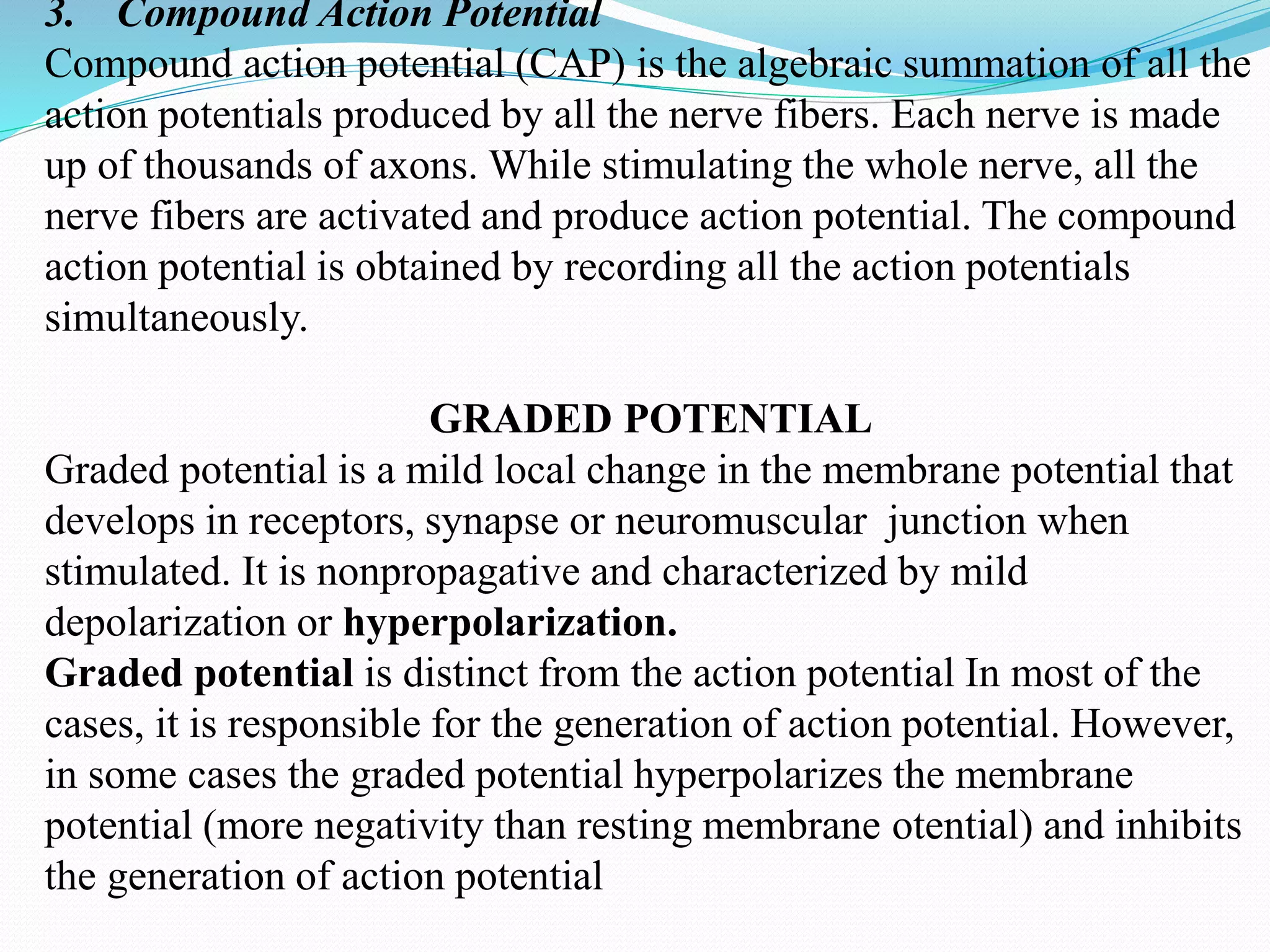1. The document discusses the electrical changes that occur in muscles during contraction, known as the resting membrane potential and action potential.
2. The resting membrane potential is the voltage difference across the cell membrane at rest, around -70mV for nerves and -80mV to -90mV for muscles. It results from ion gradients established by the sodium-potassium pump and diffusion of sodium and potassium ions.
3. When a muscle is stimulated, an action potential occurs through depolarization and repolarization phases, resulting in a rapid change in membrane potential. The action potential propagates the signal along the membrane.













